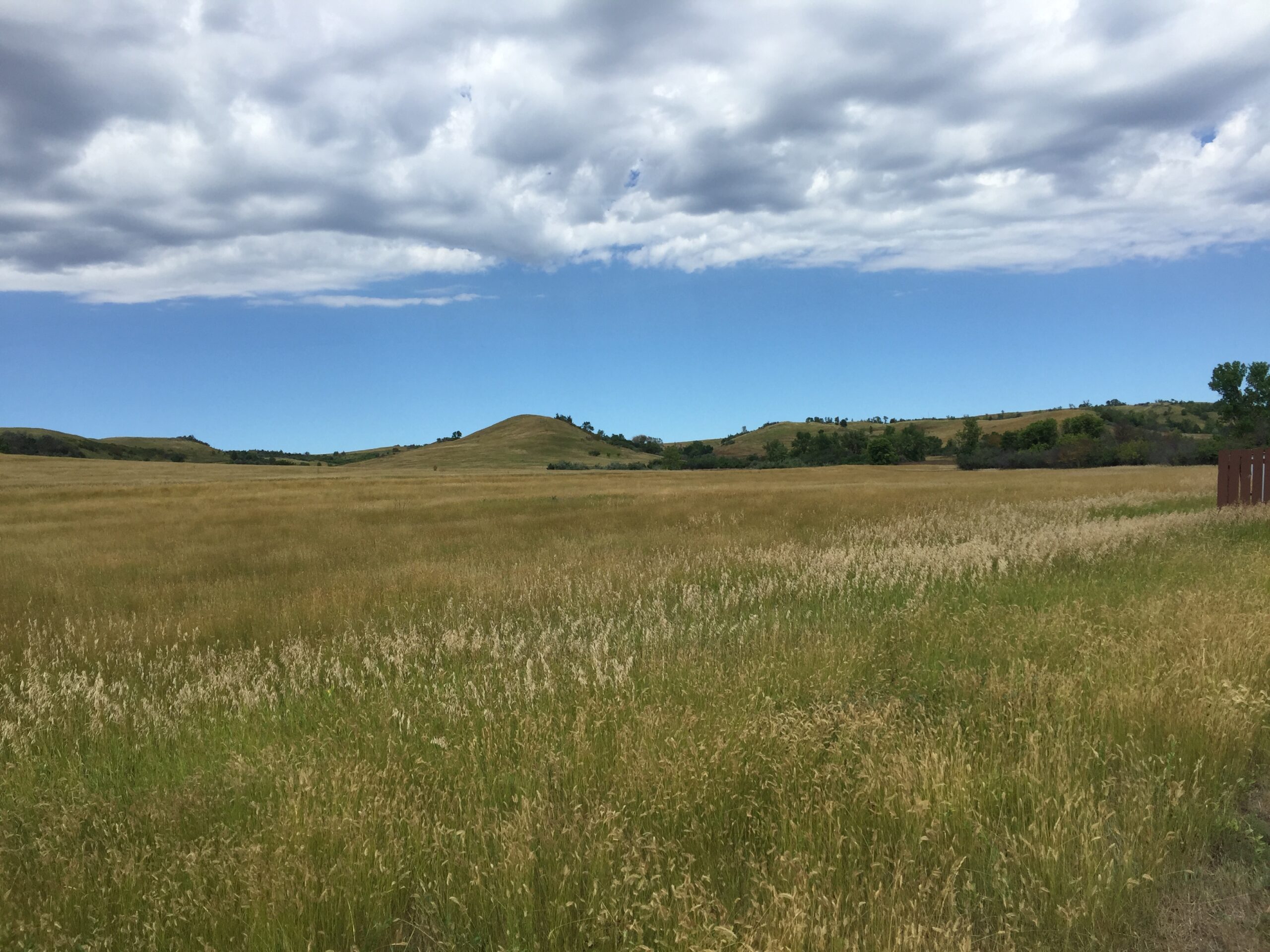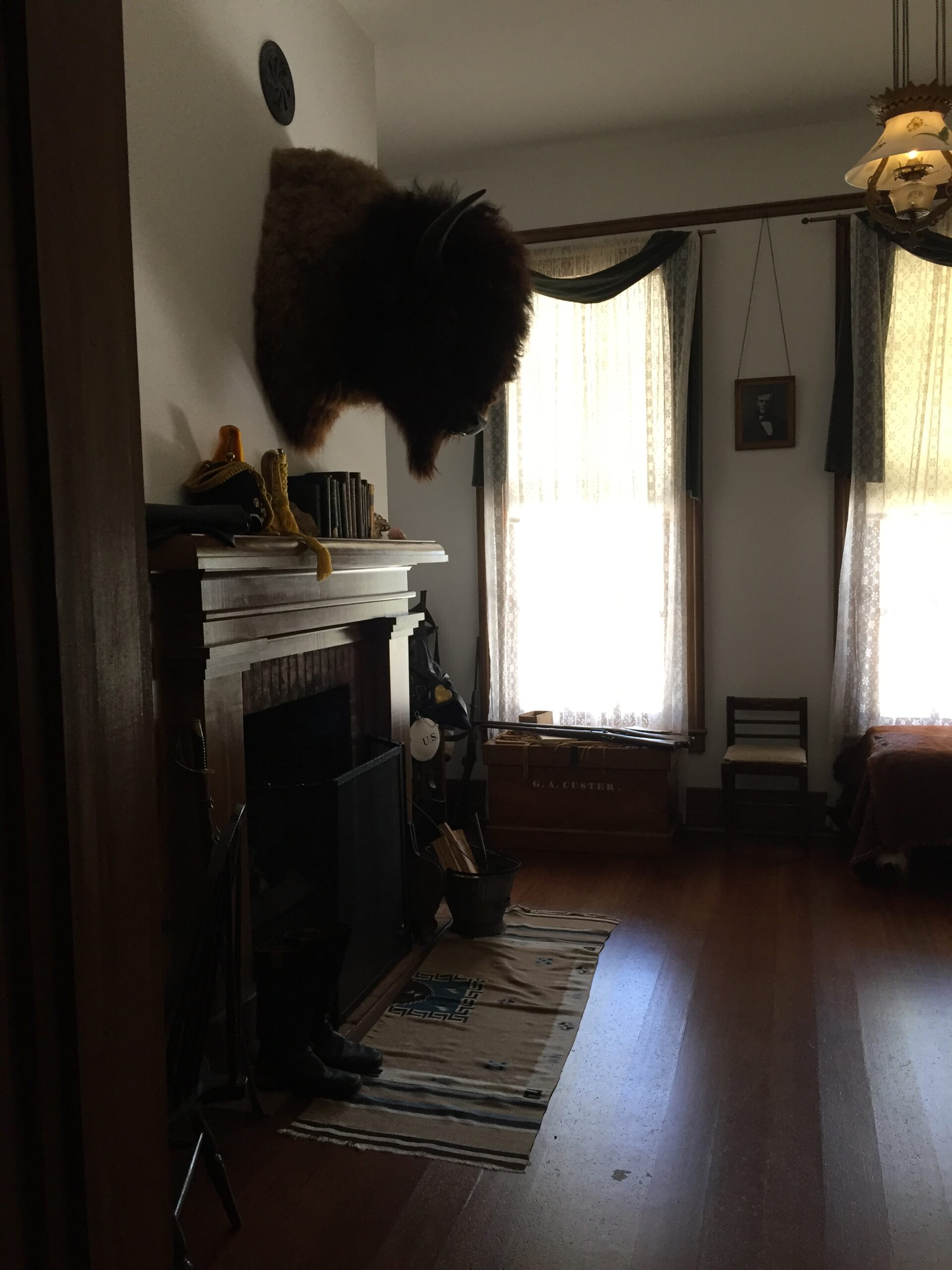Just outside of Bismarck, North Dakota, lies the reconstructed Fort Abraham Lincoln cavalry post, now a really nice state park. Lying at the confluence of the Heart and Missouri Rivers, the park has lots to see and do—a lovely riverside view, miles of hiking trails around the 1873 cavalry post and the 1872 infantry post, and a reconstructed Mandan Indian village.
The infantry post was created to protect surveyors and later workers from Indian attacks during construction of the Union Pacific Railroad. Unfortunately, infantry were of little use against the mounted and well-armed native tribes. So a cavalry post was quickly added downhill from the infantry post, and both posts operated together during the 1870s and 1880s. They were abandoned early in the 1890s, after the railroad was completed and the danger of native uprisings had been eliminated (generally, by eliminating the natives).
Fort Abraham Lincoln is best known as the post from which George Armstrong Custer led his 7th Cavalry to the ill-fated Battle of Little Big Horn. Today, a few of the buildings (barracks, stables, grainary, and Custer’s home) have been rebuilt as they would have appeared in 1875, when Custer was base commander. You can visit the buildings, and take a guided tour of Custer’s home. The tour guide kept mentioning all the materials that were ‘repurposed’ from the buildings after the Army abandoned the post. According to the guides, a number of older homes in Bismarck and nearby Mandan were built with materials from the barracks and officers’ homes. (They are still looking for the custom-built bannister that Custer had installed so that he could slide down the bannister and out the front door of his house, but no one has fessed up.)
Equally interesting was the reconstructed Mandan village. The Mandan culture wasn’t one I was familiar with—they were very successful river bottom farmers, and lived in large villages of well insulated, earth covered mound structures. They raised the ‘Three Sisters’ crops of corn, beans, and squash, and traded excess crops within a wide network of other tribes. They also hunted buffalo and other game. Unfortunately, their story is a common one among native tribes—first decimated by smallpox in the 1790s, they were nearly exterminated when the paddle wheel riverboats came up the Missouri, bringing Norway rats. The rats, who could burrow deeply into the soil as the local mice did not, destroyed their underground caches of food. Many starved to death. Finally, of course, they were driven from the river bottomlands into reservations on the dry prairies, where they could not farm as they had.
Russ caught up to me after I’d been there a couple of days, so I saw some of the sights before he came, but I saved the best for last, and we spent a hot but very interesting day touring the forts, climbing up the restored blockhouse fortifications at the infantry post, visiting Custer’s home and the park museum in the CCC-built visitors center, and strolling the Mandan village. They even have very good coffee and a nice bookshop in the old commissary building.









All in all, a highly recommended visit!